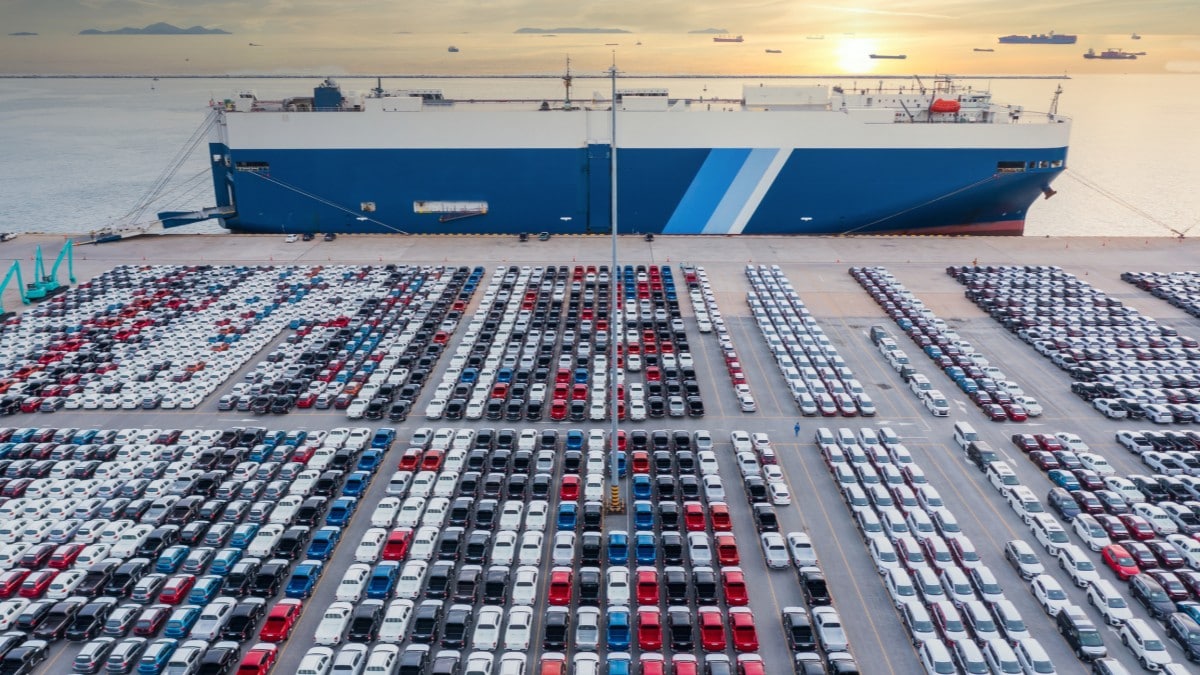
The White House this week softened tariffs pushing up the price of every new car in America. A new analysis says the move will not bring prices down, but may slow their rise.
Michigan-based Anderson Economic Group (AEG) studies the auto industry and is known for somewhat conservative analyses of major industry developments. If you want someone to overreact, you don’t call AEG.
In early April, the group predicted that tariffs would “cost an additional $2,500 to $5,000 for the lowest-cost American cars, and up to $20,000 for some imported models.”
Accounting for this week’s changes, the group revised its analysis yesterday. Now, AEG predicts, the least-impacted cars will “still see tariff burden of $2,000+.” At the high end of the scale, AEG says, some vehicles could “incur tariffs exceeding $12,000.”
Three Rounds of Tariffs
Three rounds of tariffs impact car prices, two already active and one likely to start tomorrow.
One round added 25% to the cost of all steel and aluminum goods imported from outside the U.S. Automakers already use as much domestic metal as possible, so this round has the lowest impact of the three. But it increases the cost of most car parts.
A second round added 25% to the cost of any car imported from outside North America, and a handful of cars built in Canada or Mexico with many parts from outside the continent.
A third round will add 25% to the cost of imported car parts. That round is not in effect yet. It begins when the Commerce Department publishes rules explaining how it will determine where parts originate. That’s a complex problem, as many parts are made of parts imported from elsewhere. Some cross borders multiple times during assembly. The president’s order enacting the tariffs instructed the Commerce Department to publish its rules by May 3 — an unusually tight deadline.
As of May 2, we’ve seen no sign of them.
What Has Changed
On Wednesday, the White House made two moves to ease the burden on automakers.
One eliminated so-called “stacking,” meaning automakers would only have to pay the highest tariff on any particular good, not all tariffs combined. However, a New York Times analysis questioned whether this rule will cut the cost of most car parts. Some analysts believe it exempts automakers, not the suppliers from which they buy parts.
A second created a refund scheme that will pay automakers back a declining portion of their tariff fees for two years.
Change ‘Does Not Eliminate Tariff Costs from Any Vehicle‘
AEG says the modified tariff plan “does not eliminate tariff costs from any vehicle,” the group studied.
But it may blunt their impact on some.
General Motors builds several large SUVs on the same platform, including the Chevrolet Tahoe, GMC Yukon, and Cadillac Escalade. Those, AEG estimates, would have seen an $11,000 levy under the original tariff scheme. “Under the new policy, we estimate it will total just under $8,000,” they write.
The Ford Explorer will see its tariff burden drop from “about $4,300” to “about $2,400.”
Other vehicles could see no change at all.
The Ford Mustang Mach-E electric SUV, however, will see no substantial change. The Mach-E “previously had a very high tariff exceeding $12,000,” AEG writes. “It will still have that very high tariff.”

